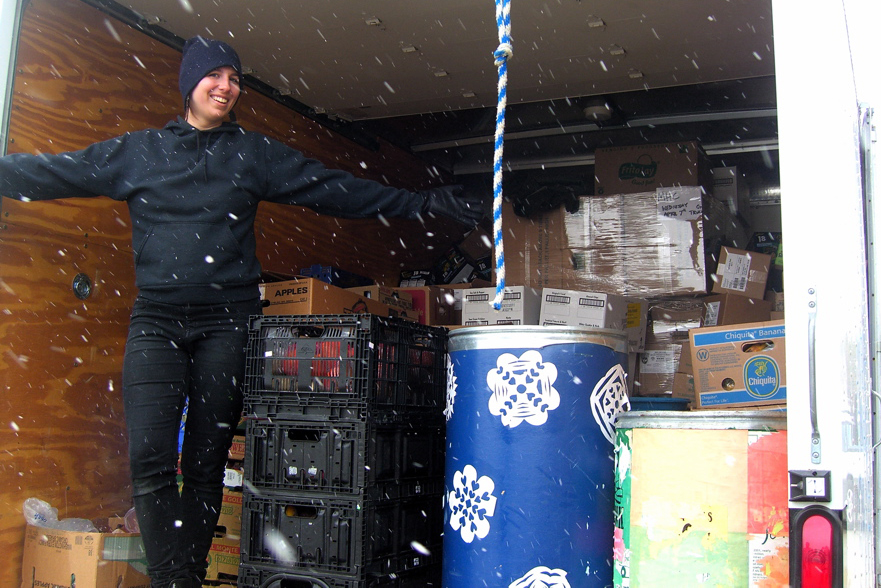
All of the food donated through food drives has to be sorted and transported, adding extra labor to the food banking system. (Courtesy of Mother Hubbard's Cupboard)
"There’s this deeper level of change that can happen if you take your kids out to the grocery store, and you say, ‘we’re going to spend twenty-five dollars on food for other people. And I want you to think about things that other people might like, and think about things that you like. Because other people are like you.'"
This time of year, in communities across the country, schools and businesses will be collecting cans for food drives. It’s an American tradition during the holidays, to balance feast planning and shopping trips with plans to help others and to share good fortune with those experiencing hard times.
In recent years though, I’ve come across criticism of the food drive approach, as an inefficient method for getting food to people experiencing food insecurity. All those cans need to be checked and sorted. Plus, agencies can obtain more food for less money through the food-banking system, so individuals paying retail for food is a waste of money.
It’s better, the argument goes, to give money directly to trusted organizations.
Amanda Nickey is the President and CEO of Mother Hubbard’s Cupboard. I sat down with her in our studio this week for her thoughts on holiday food drives.
We talk about the role of intention in food drive participation and some of the hidden costs of providing emergency food assistance. Nickey also suggests that efficiency isn't the only thing to consider when making choices about giving.
Listen to my conversation with Amanda on this episode of Earth Eats.












